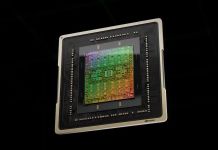The transistor is one of the most important inventions in modern times. It revolutionized electronics and unlocked new and much, much smaller circuits. The patent for the first field effect transistor was invented as early as 1925 by Julius Edgar Lilienfeld, but it took until the 1990’s until we actually saw proof of it working. Several other field effect transistors have been presented since then, the latest comes from Portugal and Centro de Investigação de Materiais (Cenimat/I3N) at Faculdade de Ciências e Tecnologia, Universidade Nova de Lisboa.
The group led by researchers Elvira Fortunato and Rodrigo Martins has been able to use common paper as the substrate, I.e. the physical support. Biopolymers are commonly used in experiments when trying to find a cheaper alternative to the substrates of today. Cellulose is one of the most abundant biopolymers we have today, which makes it cheap and highly attractive for these kind of experiments.
The research group not only managed to use cellulose as substrate but also act as electric insulator by fabricating the device on both sides of the paper. Add to that the paper transistor outperforms the amorphous silicon thin-film transistor used in modern LCD displays and is up to par with the very latest oxide thin-film transistors, which are still a rare sight.
Since paper is a flexible and a biomaterial it would open up new possibilities for bendable displays, bio-labeling, small and cheap displays that could be used for labeling of varies things and more. Our only concern so far is the degradability, I.e. the lifespan of displays made from paper.
The article High Performance Flexible Hybrid Field Effect Transistors based on Cellulose Fiber-Paper will be published next September in IEEE Electron Device Letters.

















